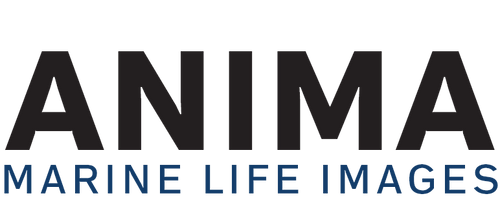Roger Anthony Swainston is an Australian painter, naturalist and zoologist. He is one of the most recognised artists of the underwater world.

Most of my working life has been spent trying to capture the elusive colours, surfaces and forms of the marine world. For many years I worked almost exclusively with fish. The discipline of researching them, then closely examining, drawing and painting more than 6,000 of them, has given me not only a profound knowledge of my subjects but also an intimate understanding of the techniques and materials I use to paint them.
"A Longtom shimmering in crystal-clear tropical waters could be a pure distillation of light, water and colour; a perfectly camoflaged Stonefish could have spontaneously generated from the lumpy algea-covered rocks themselves. Fishes are form and function and habitat made flesh..."
Swainston's Fishes of Australia, 2011
Over the years my work has somewhat diverged into two principal streams; the continuing work of painting portraits of marine animals, and the work of trying to capture from life the underwater world on a broader scale. Working on portraits of fishes and crustaceans still captivates me, their variety and beauty an endless inspiration. From simple identification illustrations I have gradually moved towards creating life-sized and life-like studies of individual animals, capturing their character and their unique presence. I am presently working on life-size paintings of all the worlds species of Rock Lobsters from specimens, a quest which will take years to accomplish.
"The pattern of scales on the flank of a fish appears perfectly regular and even, yet no two scales are alike and even their alignment is never exact. Herein lies the great challenge of portraying these animals, capturing this 'ordered randomness'..."
Poissons d'Australie, Peintures de Roger Swainston et gravures anciennes,
Exhibition Catalogue, Museum of Natural History (Nantes, France), 2015
For several decades I painted thousands upon thousands of illustrations of marine life, mostly created from underwater photographs and specimens, usually preserved in museum collections. The urge to work from life was a constant and relentlessly growing desire. Even after many years of diving and underwater photography I still felt I was not achieving this. So, after many years of musing (and a little procrastination) I developed the materials and methods I needed and in 1995, in the Red Sea off the coast of Yemen, I embarked upon an entirely new adventure; drawing the reef underwater. From the very beginning I was captivated - it was difficult to draw while scuba diving, but not insurmountably so, and eventually immensely rewarding. My drawings evolved rapidly as I became accustomed to a host of new challenges underwater and above, though the materials and methods have remained almost identical to this day.
My first black and white underwater drawings of the reef led to the works which I call "ecosystem portraits". Creating the drawings requires many hours spent motionless on the seafloor, observing the life of the reef and returning every day to the same position to meticulously capture each section of reef. This discipline, which can involve 4 - 5 hours a day underwater for anything up to three weeks, allows me to build an understanding of the ecology of the area. Constant photography of individual animals, both resident and transitory, provides a visual record of life on the reef which I combine with the detailed drawing of the reefscape to create paintings which capture the ecosystem as a whole. These final painted works, which occupy many months in the studio, are an indepth study of a functioning ecosystem and its multitudes of life forms, doing what they do in the relative abundance in which they are found, in the particular niches they occupy. The paintings are a baseline, a benchmark of the condition of the reef at the time they were created.
In 2001 I began my project to create five of these large underwater paintings from the Ningaloo Reef, a selection of differing environments from around Coral Bay, Western Australia. Once I began the work it became clear that I could continue to follow these same particular sites I had portrayed over the years and observe how they developed and evolved over time. So, I have been returning to these same sites every year since 2001 to create photo-mosaics, each time in the exact spot from which I created the initial drawings. Over the span of 22 years these have now grown into a fascinating record of change in the reef. I hope to continue this work for as long as I am able to continue diving, hopefully for many more years to come.
